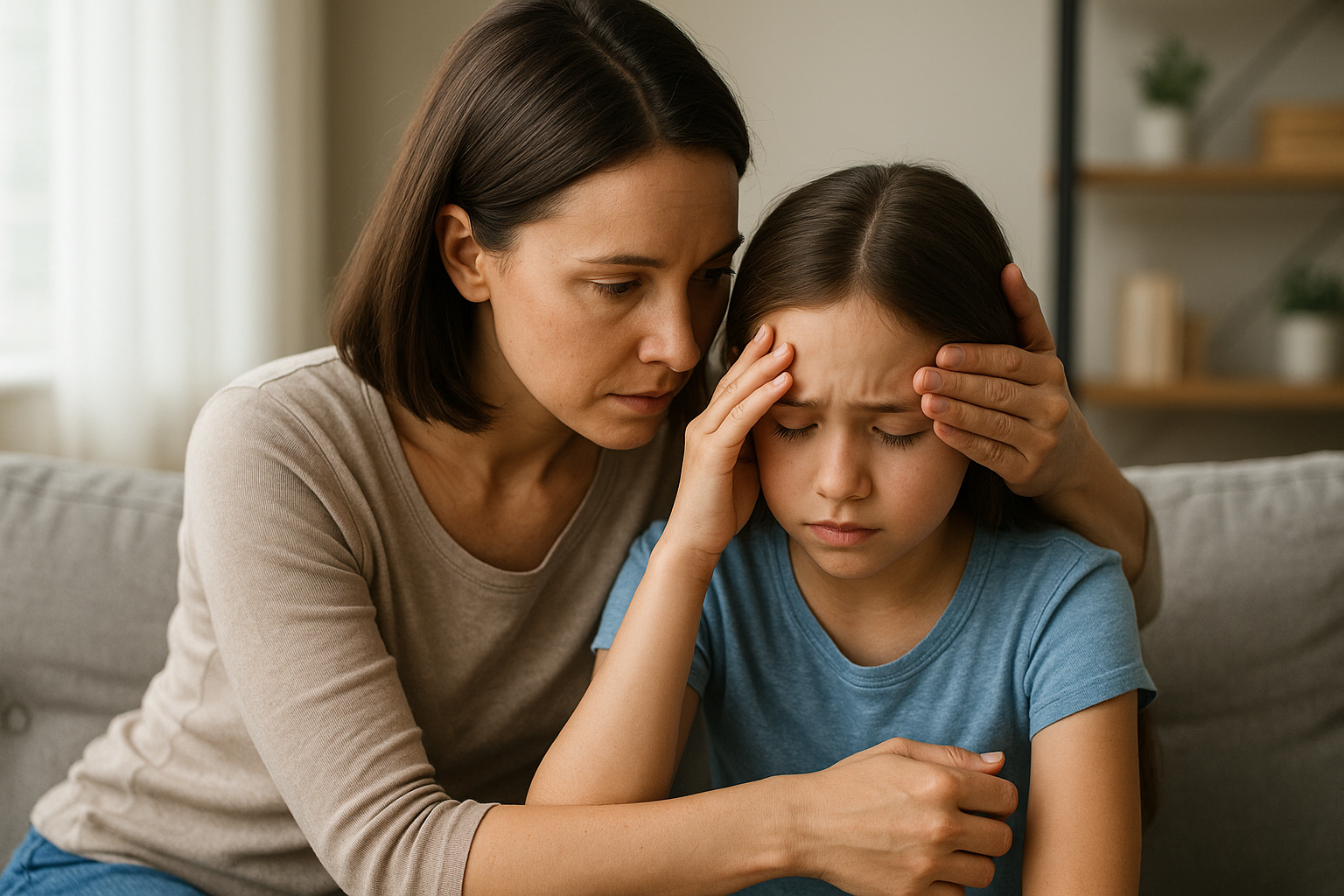Childhood is a time of learning, growth, and exploration—but it can also come with fears, worries, and moments of anxiety. While it’s completely normal for children to experience anxiety from time to time, some kids may feel overwhelmed by everyday situations. The good news is: with understanding and support, you can help your child learn to manage anxiety in healthy and empowering ways.
Anxiety doesn’t have to control your child’s life. When you provide tools, compassion, and structure, you’re not only helping them feel safer—you’re teaching them resilience and emotional strength.
Here’s how to support your child in navigating daily anxiety with confidence.
Understand What Anxiety Looks Like in Children
Anxiety isn’t always obvious. It can show up in different ways depending on the child’s age, personality, and situation.
Common signs of anxiety in children include:
- Frequent stomachaches or headaches without medical cause
- Avoiding certain activities (school, playdates, bedtime)
- Restlessness or difficulty concentrating
- Irritability or emotional outbursts
- Trouble sleeping or frequent nightmares
- Constant reassurance-seeking (“Will it be okay?” “Are you sure?”)
- Physical symptoms like sweating, trembling, or a racing heart
Understanding these signs helps you respond with support instead of frustration.
Normalize Anxiety (Without Feeding It)
Start by helping your child understand that anxiety is a normal human emotion—one that everyone experiences sometimes.
Say things like:
- “It’s okay to feel nervous. That’s your brain trying to protect you.”
- “Lots of kids feel this way sometimes. You’re not alone.”
- “Feelings aren’t forever. This will pass.”
Avoid telling your child to “just calm down” or “stop worrying.” Instead, give them the message that it’s okay to feel scared—and that they are capable of handling it.
Stay Calm and Grounded Yourself
Your child looks to you for cues on how to feel. If you seem panicked, rushed, or irritated when they’re anxious, it sends the message that anxiety is dangerous—or something to be ashamed of.
When your child is anxious, be their calm anchor.
You can say:
- “I’m here. We’ll get through this together.”
- “Let’s take a few deep breaths together.”
- “You’re safe, and I’ll help you figure this out.”
Your calm presence helps regulate their nervous system.
Use Simple Coping Tools
Teach your child easy strategies they can use anytime anxiety shows up.
Here are some child-friendly tools:
- Deep breathing: Breathe in through the nose like smelling a flower, out through the mouth like blowing out a candle.
- Five senses grounding: Name 5 things you see, 4 you can touch, 3 you hear, 2 you smell, and 1 you taste.
- Calm-down kit: Fill a small box with comforting items like a stress ball, coloring pages, fidget toys, or a favorite book.
- Worry box: Let your child write or draw their worry, then “lock” it in a box so their brain can take a break.
- Positive mantras: Help them create phrases like “I can do hard things” or “Worries come and go.”
Practice these tools when your child is not anxious so they’re easier to access in the moment.
Help Them Face (Not Avoid) Their Fears
While it’s tempting to protect your child from anxiety triggers, avoiding anxiety only makes it grow stronger. Instead, gently support your child in facing small fears gradually, at their own pace.
This might look like:
- Staying at a birthday party for 15 minutes the first time
- Practicing ordering food at a restaurant with your help
- Reading aloud in front of one person before doing it in class
Each success builds confidence. Celebrate progress—not perfection.
Create Predictable Routines
Children feel more secure when they know what to expect. Routines create structure, which helps reduce anxiety about the unknown.
Try to keep consistent routines for:
- Morning and bedtime
- Homework and screen time
- Transitions between school, activities, and home
You can even create visual schedules for younger children to help them feel in control of their day.
Talk About Anxiety Openly
Avoid making anxiety a taboo topic. Talk about it like any other feeling.
Say:
- “What does anxiety feel like in your body?”
- “When does it show up the most?”
- “Let’s come up with a plan for when those feelings come back.”
Use books, stories, or drawing to help your child explore their feelings. When they feel understood, they’re more likely to open up—and less likely to feel ashamed.
Offer Reassurance—Then Build Independence
It’s okay to reassure your child when they’re anxious, but constant reassurance can become a habit that keeps them dependent.
Instead of saying “You’ll be fine” every time, try:
- “What can you tell yourself when that worry comes back?”
- “Let’s remember the last time you handled this really well.”
- “You have tools now—want to try one?”
This shift empowers your child to rely on themselves, not just you.
Know When to Seek Extra Help
If anxiety is interfering with your child’s ability to enjoy daily life, go to school, sleep well, or interact socially, it might be time to speak with a mental health professional.
Therapists who work with children can help them build skills in a supportive environment. It’s not a failure to seek help—it’s a sign of strength and care.
Anxiety Is a Visitor—Not the Boss
When your child struggles with anxiety, it’s not a sign of weakness or failure. It’s an opportunity to build emotional skills that will last a lifetime.
With your support, your child can learn that anxiety doesn’t define them—it’s just a feeling that comes and goes. With tools, compassion, and time, they’ll learn to face their fears, believe in themselves, and grow into someone who can handle life’s challenges with courage and calm.
